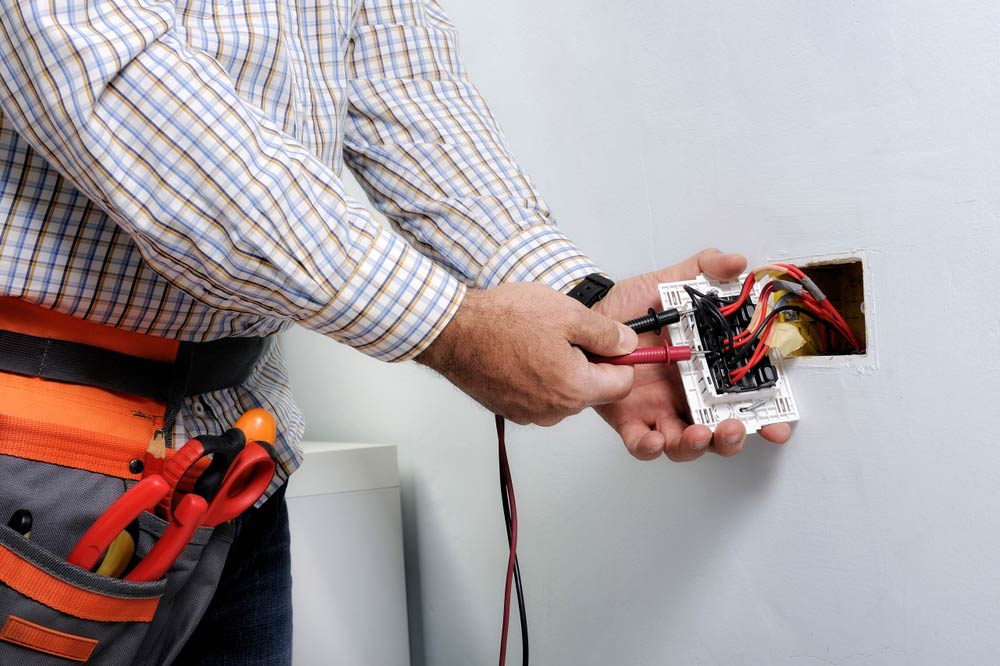The Ultimate Guide to Electrical Setup: Tips and Strategies for a Safe and Reliable Home Wiring System
In the realm of home upkeep, couple of facets are as important yet usually ignored as the electrical wiring system. Making certain a safe and efficient home circuitry arrangement demands not only a standard understanding of electrical principles however additionally sensible knowledge of installment techniques and upkeep methods. From browsing the intricacies of cable links to troubleshooting typical concerns that might arise, this overview intends to outfit property owners with the necessary ideas and devices required for a safe and energy-efficient electrical system. By exploring the subtleties of electric precaution and energy-saving methods, this comprehensive guide will certainly clarify the details of home electrical wiring, equipping individuals to organize their household's electric infrastructure.
Understanding Electric Precaution
To guarantee the security of both individuals and residential or commercial property, understanding and carrying out correct electrical security measures is critical in any home circuitry task. It is important to carry out a complete examination of the electrical system before beginning any wiring task to determine potential dangers or problems that require to be attended to.
Furthermore, using the appropriate devices and equipment is crucial for maintaining safety and security during electric installations. Insulated gloves, voltage testers, and protective eyeglasses are several of the basic security gear that should be used to avoid electric shocks or crashes. It is additionally essential to de-energize circuits prior to dealing with them and to label all circuits and breakers plainly to avoid confusion.

Important Tools for Home Electrical Wiring
Making certain the proper execution of electric precaution in home circuitry projects includes using a specific collection of important devices developed to assist in the installment process successfully and safely. A few of the trick devices required for home wiring tasks include a voltage tester for examining live cords, cable strippers for eliminating insulation from cords, a cable cutter for specifically cutting cords to length, a screwdriver set for securing electrical components, electric tape for insulation and protecting links, a cord ripper for removing cord sheathing, and a multimeter for measuring voltage, present, and resistance. Additionally, a drill with bits is necessary for creating holes for circuitry and installing electrical boxes, while fish tapes or rods aid in drawing cords via conduits or walls. It is important to purchase premium devices to guarantee accuracy, efficiency, and security during home circuitry jobs. By having the required tools conveniently available, homeowners can properly navigate the installation process and maintain a secure electric system within their homes - BRE Electrical Melbourne.
Step-by-Step Electrical Installment Guide
Starting an electrical installment job needs careful planning and adherence to safety guidelines. Before starting any kind of work, guarantee you have a detailed plan describing the layout of the electrical system, including the positioning of electrical outlets, buttons, and fixtures. Consider the power requirements of each tool to figure out the suitable cord gauge and circuit breaker sizes.
The initial step in the installation procedure is to shut down the power supply to the area where you will certainly be functioning. Make use of a voltage tester to validate that the circuits are de-energized before touching any cords. Next, thoroughly eliminate existing components or electrical outlets and separate the cords.
When setting up brand-new electrical wiring, run cable televisions with wall surfaces and ceilings, securing them in position with appropriate installations. Follow neighborhood building codes and maker directions for proper wire installment and links. BRE Automation Australia. Make certain to classify cables for very easy identification and future maintenance

Troubleshooting Common Electrical Wiring Issues
Having actually completed the setup process as outlined in the previous subtopic, troubleshooting common circuitry problems is a necessary ability for guaranteeing the safety and performance of your electrical system. One typical problem is a stumbled breaker, usually triggered by overloaded circuits or a brief circuit. To repair this, locate the breaker panel, identify the stumbled breaker by seeking the one not completely in the "on" setting, and reset it by turning it completely to "off" and then back to "on." An additional widespread trouble is a malfunctioning electrical outlet, characterized by no power or recurring power supply. Make sure the outlet is not controlled by a button, after that utilize a voltage tester to look for power. If there is no BRE Services power, transform off the circuit, check the circuitry links for any type of loosened or damaged cables, and change the outlet if necessary. Continually flickering lights can indicate loose electrical wiring connections or an overloaded circuit. To resolve this, check and tighten all cord connections in the impacted components and switches and rearrange the load on the circuit to stabilize the electrical need. On a regular basis checking and promptly dealing with these common wiring concerns will certainly keep the safety and effectiveness of your home electrical system.
Tips for Energy-saving Electrical Equipments
For ideal energy efficiency in electric systems, implementing clever practices and utilizing energy-saving innovations is paramount. One key suggestion for achieving an energy-efficient electrical system is to upgrade to LED lighting. Proper insulation and securing of windows, doors, and electrical outlets can additionally protect against power loss, ultimately reducing the workload on electric systems.
Conclusion
To conclude, implementing appropriate precaution, utilizing vital tools, following a detailed setup guide, repairing usual problems, and including energy-efficient suggestions are important for a safe and efficient home electrical wiring system. By adhering to these techniques, homeowners can ensure the longevity and functionality of their electrical setups. It is necessary to focus on safety and performance when it comes to electric job in order to avoid potential dangers and to preserve a dependable electrical system in the home.